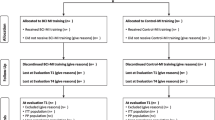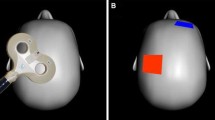Abstract
Studies using BCIs based upon non-invasive, scalp recorded electroencephalography (EEG) have consistently demonstrated utility, both as scientific tools for neuromodulation and for clinical neurorehabilitation purposes. They are particularly appealing in clinical contexts where physical movement is impaired, for instance following stroke. The intrinsic advantage of Brain-Computer Interfaces (BCIs) over alternate rehabilitation strategies is that they work even when output at the behavioural level is non-existent. Patients exhibiting minimal or no residual limb movement after a stroke cannot partake in gold standard physiotherapy, but might still demonstrate brain activity patterns when attempting to move the impaired limb. These patterns can be targeted to enhance recovery. However, the role of BCI should evolve once behavioural output is available. We must not be seduced by the allure of cutting-edge technology at the expense of targeting the specific neurophysiological features that are most likely to drive recovery. At the most basic mechanistic level, the majority of BCIs are driven by neural signals generated by imagination of movement. We need to revisit the question—could motor imagery alone could achieve the same outcomes, or what is the added clinical benefit of the BCI? Accordingly, what is the minimum required intervention using BCI (in terms of time and hardware) to establish a habit of good quality motor imagery that could then sustain rehabilitation without the technology? Motor imagery is free, available to every person and at any time. Using technology to harness its virtues while not compromising its simplicity is the ultimate challenge for the field.
Technology is the answer. But what was the question?
Cedric Price (1966)
Access this chapter
Tax calculation will be finalised at checkout
Purchases are for personal use only
Similar content being viewed by others
References
Simon C, Bolton DAE, Kennedy NC, Soekadar SR, Ruddy KL (2021) Challenges and opportunities for the future of brain-computer interface in neurorehabilitation. Front Neurosci 15:814. https://doi.org/10.3389/fnins.2021.699428
Ruddy K, Balsters J, Mantini D, Liu Q, Kassraian-Fard P, Enz N, Mihelj E, Subhash Chander B, Soekadar SR, Wenderoth N (2018) Neural activity related to volitional regulation of cortical excitability. elife 7:e40843. https://doi.org/10.7554/eLife.40843
Mihelj E, Bächinger M, Kikkert S, Ruddy K, Wenderoth N (2021) Mental individuation of imagined finger movements can be achieved using TMS-based neurofeedback. NeuroImage 242:118463. https://doi.org/10.1016/j.neuroimage.2021.118463
Simon C, Ruddy KL (2022) A wireless, wearable Brain-Computer Interface for neurorehabilitation at home; A feasibility study. In: 2022 10th International Winter Conference on Brain-Computer Interface (BCI), pp 1–6. https://doi.org/10.1109/BCI53720.2022.9734849
McElwaine P, McCormack J, Harbinson J, National Stroke Programme (2016) Irish Heart Foundation/HSE National Stroke Audit Rehabilitation Units 2016
Baniqued PDE, Stanyer EC, Awais M, Alazmani A, Jackson AE, Mon-Williams MA, Mushtaq F, Holt RJ (2021) Brain–computer interface robotics for hand rehabilitation after stroke: a systematic review. J NeuroEng Rehabil 18(1):Article 1. https://doi.org/10.1186/s12984-021-00820-8
Bassetti CLA, Endres M, Sander A, Crean M, Subramaniam S, Carvalho V, Di Liberto G, Franco OH, Pijnenburg Y, Leonardi M, Boon P (2022) The European Academy of Neurology Brain Health Strategy: one brain, one life, one approach. Eur J Neurol 29(9):2559–2566. https://doi.org/10.1111/ene.15391
Cattaneo G, Bartrés-Faz D, Morris TP, Sánchez JS, Macià D, Tarrero C, Tormos JM, Pascual-Leone A (2018) The Barcelona brain health initiative: a cohort study to define and promote determinants of brain Health. Front Aging Neurosci 10. https://www.frontiersin.org/articles/10.3389/fnagi.2018.00321
Chen Y, Demnitz N, Yamamoto S, Yaffe K, Lawlor B, Leroi I (2022) Defining brain health: a concept analysis. Int J Geriat Psychiatry 37(1). https://doi.org/10.1002/gps.5564
Saibene A, Caglioni M, Corchs S, Gasparini F (2023) EEG-based BCIs on motor imagery paradigm using wearable technologies: a systematic review. Sensors 23(5):Article 5. https://doi.org/10.3390/s23052798
Cruz A, Pires G, Lopes AC, Nunes UJ (2019) Detection of stressful situations using GSR while driving a BCI-controlled wheelchair. In: 2019 41st Annual International Conference of the IEEE Engineering in Medicine and Biology Society (EMBC), pp 1651–1656. https://doi.org/10.1109/EMBC.2019.8857748
Zimmermann R, Marchal-Crespo L, Lambercy O, Fluet M-C, Riener R, Wolf M, Gassert R (2011) Towards a BCI for sensorimotor training: initial results from simultaneous fNIRS and biosignal recordings. In: 2011 Annual International Conference of the IEEE Engineering in Medicine and Biology Society, pp 6339–6343. https://doi.org/10.1109/IEMBS.2011.6091565
Aggarwal S, Chugh N (2022) Review of machine learning techniques for EEG based brain computer interface. Archiv Comput Methods Eng 29(5):3001–3020. https://doi.org/10.1007/s11831-021-09684-6
Cohen MX (2014) Analyzing neural time series data: theory and practice. https://doi.org/10.7551/mitpress/9609.001.0001
Abiri R, Borhani S, Sellers EW, Jiang Y, Zhao X (2019) A comprehensive review of EEG-based brain–computer interface paradigms. J Neural Eng 16(1):011001. https://doi.org/10.1088/1741-2552/aaf12e
Xie Y, Oniga S (2020) A review of processing methods and classification algorithm for EEG signal. Carpathian J Electron Comp Eng 13(1):23–29. https://doi.org/10.2478/cjece-2020-0004
Overman JJ, Carmichael ST (2014) Plasticity in the injured brain: more than molecules matter. Neuroscientist 20(1):15–28. https://doi.org/10.1177/1073858413491146
Stinear CM, Lang CE, Zeiler S, Byblow WD (2020) Advances and challenges in stroke rehabilitation. Lancet Neurol 19(4):348–360. https://doi.org/10.1016/S1474-4422(19)30415-6
Beuter A, Balossier A, Trofimchuk S, Volpert V (2018) Modeling of post-stroke stimulation of cortical tissue. Math Biosci 305:146–159. https://doi.org/10.1016/j.mbs.2018.08.014
Beuter A, Balossier A, Vassal F, Hemm S, Volpert V (2020) Cortical stimulation in aphasia following ischemic stroke: toward model-guided electrical neuromodulation. Biol Cybern 114(1):5–21. https://doi.org/10.1007/s00422-020-00818-w
Leonardi G, Ciurleo R, Cucinotta F, Fonti B, Borzelli D, Costa L, Tisano A, Portaro S, Alito A (2022) The role of brain oscillations in post-stroke motor recovery: an overview. Front Syst Neurosci 16:947421. https://doi.org/10.3389/fnsys.2022.947421
Kwakkel G, Veerbeek JM, van Wegen EEH, Wolf SL (2015) Constraint-induced movement therapy after stroke. Lancet Neurol 14(2):224–234. https://doi.org/10.1016/S1474-4422(14)70160-7
Tung SW, Guan C, Ang KK, Phua KS, Wang C, Zhao L, Teo WP, Chew E (2013) Motor imagery BCI for upper limb stroke rehabilitation: an evaluation of the EEG recordings using coherence analysis. In: 2013 35th Annual International Conference of the IEEE Engineering in Medicine and Biology Society (EMBC), pp 261–264. https://doi.org/10.1109/EMBC.2013.6609487
Adadi A, Berrada M (2018) Peeking inside the black-box: a survey on explainable artificial intelligence (XAI). IEEE Access 6:52138–52160. https://doi.org/10.1109/ACCESS.2018.2870052
Pinto M, Leal A, Lopes F, Pais J, Dourado A, Sales F, Martins P, Teixeira CA (2022) On the clinical acceptance of black-box systems for EEG seizure prediction. Epilepsia Open 7(2):247–259. https://doi.org/10.1002/epi4.12597
Author information
Authors and Affiliations
Editor information
Editors and Affiliations
Rights and permissions
Copyright information
© 2024 The Author(s), under exclusive license to Springer Nature Switzerland AG
About this chapter
Cite this chapter
Simon, C., Ruddy, K. (2024). Keeping Our Eyes on the Prize; Are We Losing Sight of the ‘Why’ in BCI for Neurorehabilitation?. In: Guger, C., Allison, B., Rutkowski, T.M., Korostenskaja, M. (eds) Brain-Computer Interface Research. SpringerBriefs in Electrical and Computer Engineering. Springer, Cham. https://doi.org/10.1007/978-3-031-49457-4_8
Download citation
DOI: https://doi.org/10.1007/978-3-031-49457-4_8
Published:
Publisher Name: Springer, Cham
Print ISBN: 978-3-031-49456-7
Online ISBN: 978-3-031-49457-4
eBook Packages: EngineeringEngineering (R0)




